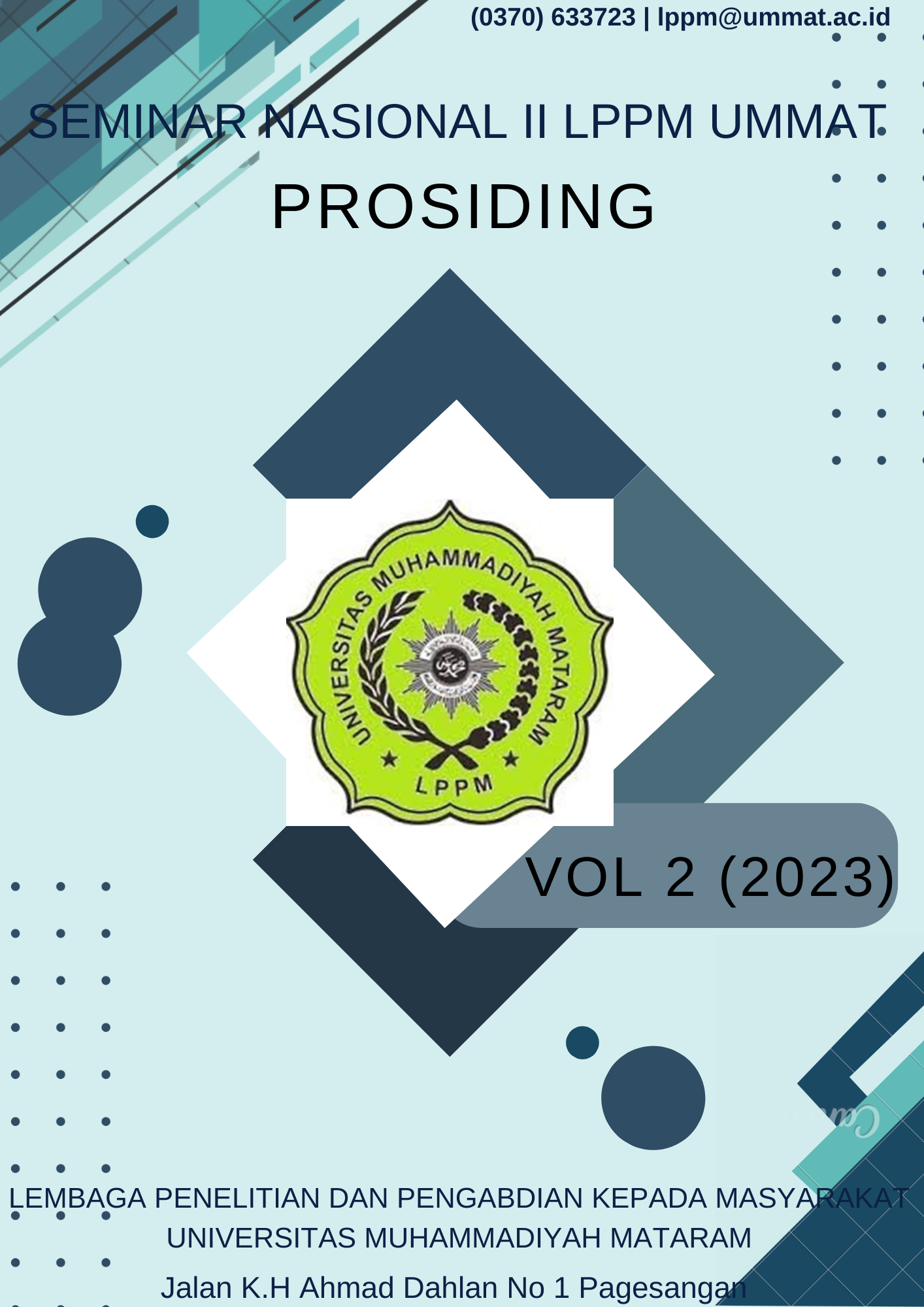Integrasi Teknologi Informasi (ICT) Dalam Pembelajaran PAI Berbasis Paradigma Multiple Intelligence di Sekolah Dasar
Keywords:
Information Technology (ICT), multiple intelligence, PAI, elementary school.Abstract
The labels of smart and stupid students are labels that have always existed in the world of education in Indonesia. It is clear that intelligent students are usually synonymous with high final exam scores on their report cards. This is of course a fatal mistake. It should be emphasized from an early age that the characteristics of the intelligence characteristics of students are different and cannot be forced to be the same. Especially with the presence of the technological era around us. then PAI learning inevitably has to be integrated with existing technology. Therefore, this study seeks to explain the concept of multiple intelligences which is integrated into Islamic Islamic education learning while still paying attention to existing technological developments to maximize Islamic Islamic education learning in the digital era and eliminate the labels of smart and stupid students. This study uses the library research method in which the primary data comes from books, journals, digital or printed magazines found in the library. The results of this study are the formulation of 9 types of PAI learning patterns based on multiple intelligences that are integrated with the presence of technology around us. These forms of learning models such as utilizing, audio-visual, RPG-based games, E-comics, etc.References
Afandi, M. (2021). Strategi Pembelajaran Berbasis Multiple Intelligence. Penerbit NEM.
Andari, D. A. (2021). Media Pembelajaran Berbasis ICT (Guepedia, Ed.). Guepedia.
Armstrong, T. (2004). Sekolah Para Juara: Menerapkan Multiple Intelligence di Dunia Pendidikan. Kaifa.
Arrofa Acesta. (2019). Kecerdasan Kinestetik dan Interpersonal Serta Pengembangannya. Media Sahabat Cendikia.
Arsyad, A. (2014). Media Pembelajarn. Rajawali Press.
Bagir, H. (2019). Memulihkan Sekolah Memulihkan Manusia. Mizan.
Chatib, M. (2017). Semua Anak Bintang. Perbit Kaifa.
Dewi, S. (2021). Parents Are Teachers. Stiletto Indie Book.
Dinata, F. R. (2020). Pengembangan Materi PAI. Penerbit Nusa Media.
Evanirosa. (2022). Metode Penelitian Kepustakaan (Library Research). Media Sains Indonesia.
Fikriyah, F. Z., & Aziz, J. A. (2018). Penerapan Konsep Multiple Intelligences pada Pembelajaran PAI. IQ (Ilmu Al-Qur’an): Jurnal Pendidikan Islam, 1(02), 220–244. https://doi.org/10.37542/iq.v1i02.17
Gardner, H. (2013a). Multiple Intelligence. Daras Books.
Gardner, H. (2013b). Multiple Intelligence. Daras Books.
Hermita, N. (2017). Pembelajaran Berbasis Kecerdasan Jamak di SD. Deepublish.
Hernowo, & Nurdin, C. (2004). Bu Slim dan Pak Bil: Kisah tentang Kiprah Guru “Multiple Intelligence†di Sekolah. MLC.
Hidayat, A. S. (2021). Pengembangan Model Pembelajaran Atletik Nomor Lari Berbasis Permainan Pada Siswa Sekolah Dasar. CV. Sarnu Untung.
Ibrahim, Yulian, & Anwar. (1998). Media Pembelajaran. Dapartemen Pendidikan dan Kebudayaan.
Irwan, Luthfi, Z. F., & Waldi, A. (2019). Efektifitas Penggunaan Kahoot! untuk Meningkatkan Hasil Belajar Siswa [Effectiveness of Using Kahoot! to Improve Student Learning Outcomes]. Pedagogia: Jurnal Pendidikan, 8(1), 96–97.
Jasmine, J. (2012). Metode Mengajar Multiple Intelligence. Nuansa Cendikira.
Kurniasih, S. (2021). Kecerdasan Interpersonal Anak Usia Dini. Guepedia.
Morissan. (2017). Metode Penelitian Survei. Kencana.
Muhaemin, & Fitranto, Y. (2022). Mengembangkan Potensi Peserta Didik Berbasis Kecerdasan Majemuk. CV. Adanu Abimata.
Mulyana. (2010). Rahasia Menjadi Guru Hebat. Grasindo.
Munafiah, N. (2018). Strategi Pembelajaran Anak Usia Dini. Penerbit mangku Bumi.
Persatuan Insinyur Indonesia, & ASEAN Federation of Engineering Organisations. (2003). 21st Conference of ASEAN Federation of Engineering Organizations: Problem-based learning (PBL) berbasis teknologi informasi (ICT). ASEAN Federation of Engineering Organisations. Conference .
Putro, H. P., Widyaningsih, T. W., & Englishtina, I. (2023). Development of Artificial Intelligence Applications (Efitra, Ed.). Sonpedia Publishing Indonesia.
Ramdhan, M. (2021). Metode Penelitian. CMN.
Roger, W., & Dominick, J. (2017). Mass Media Research: An Introduction. Wadsworth.
Sa’adah. (2020). Pengaruh Penerapan Model Pembelajaran Kooperatif Tipe Example Non Example Terhadap Hasil Belajar Siswa Pada Mata Pelajaran PAI Siswa Kelas X SMA Negeri 3 Kota Cirebon. Jurnal Syntax Transformation, 1(1), 21.
Salihan, R. (2020). ANALISIS STRATEGI KOMANDAN SATUAN DALAM MELATIH KECERDASAN INTERPERSONAL ANGGOTA (STUDI KASUS RESIMEN MAHASISWA IAIN CURUP). INSTITUT AGAMA ISLAM NEGERI CURUP.
sekolah. (n.d.). Laboratorium Komputer. Https://Sdislamattaqwatangsel.Com/Fasilitas/Laboratorium-Komputer/.
Setyawan, A. (2014). Benarkah Ada Anak yang Tidak Punya Semangat Belajar. PT Mizan Publika.
Suyadi. (2020). Pendidikan Islam dan Neurosains: Menelusuri Jejak Akal dan Otak dalam al-Qur’an Hingga Pengembangan Neurosains dalam Pendidikan Islam. Kencana.
Umairi, M., Suyadi, & Naimah. (2021). MENINGKATKAN KECERDASAN MUSIK ANAK MELALUI MEDIA GADGET BERBASIS APLIKASI (GAMES MUSIC). Jurnal Program Studi PGRA, 7(1), 44–53.
Yaumi, M., & Ibrahim, N. (2016). Pembelajaran Berbasis Kecerdasan Jama. Prenamedia Group.
Zahro, A., Sutomo, M., & Sahlan, M. (2022). Inovasi Media Pembelajaran Berbasis ICT terhadap Kecerdasan Visual Peserta Didik dalam Pendidikan Agama Islam. ŚALIĤA | Jurnal Pendidikan & Agama Islam, 5(1), 69–73.
Zed, M. (2008). Metode Penelitian Kepustakaan. Yayasan Obor Indonesia.
Downloads
Published
Issue
Section
License

This work is licensed under a Creative Commons Attribution-ShareAlike 4.0 International License.

